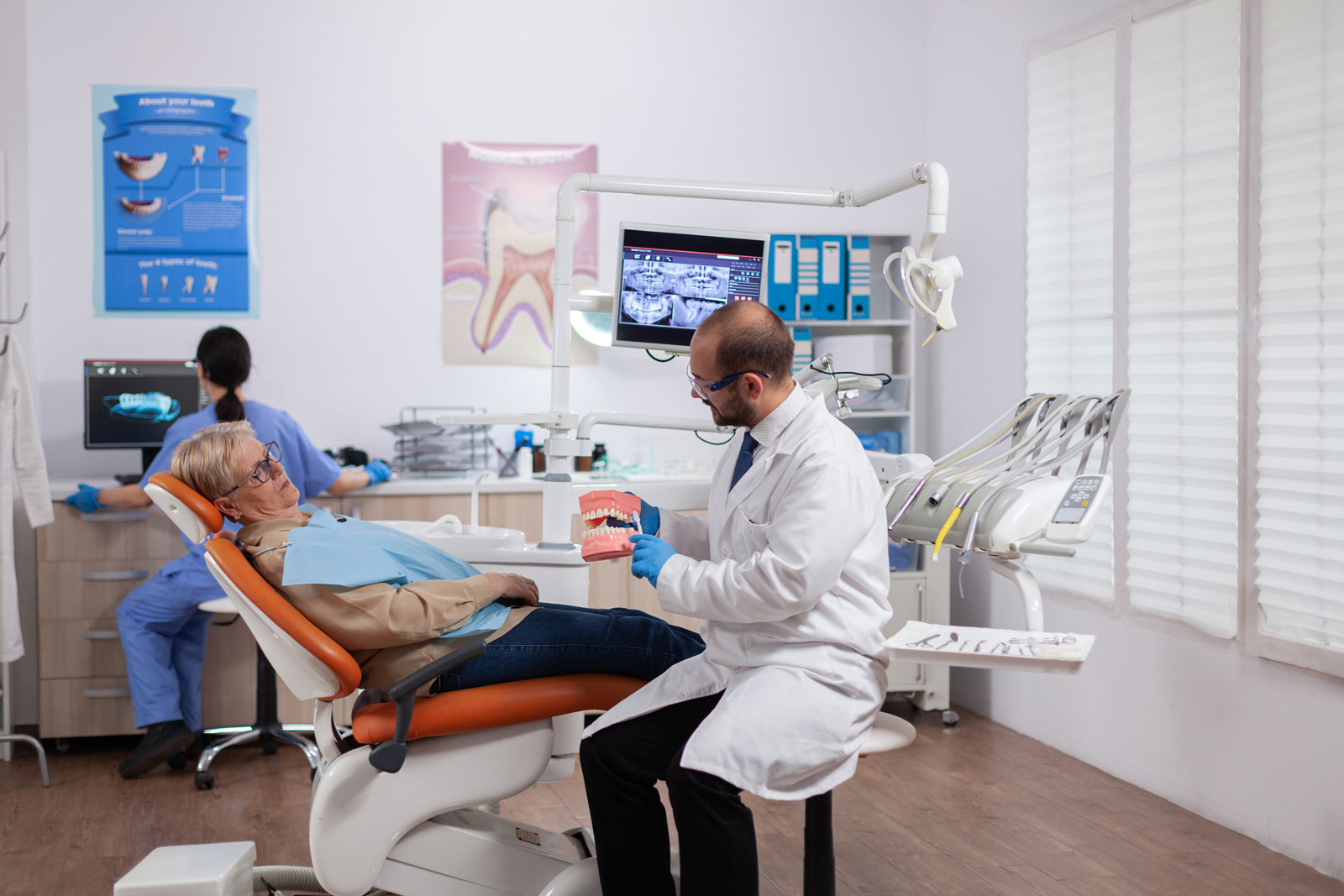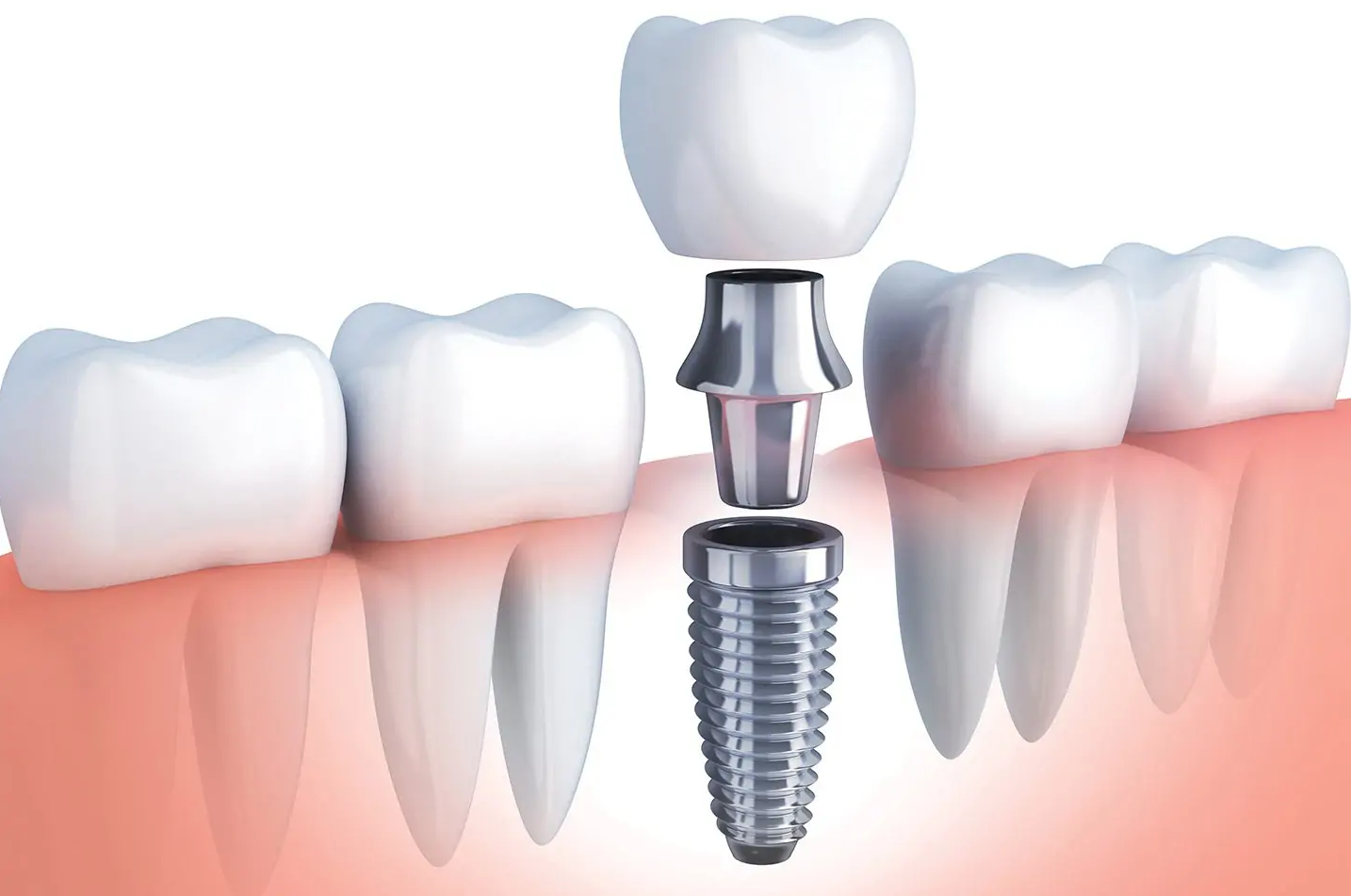Dental implants are the most effective dental treatment method used to replace missing teeth and restore oral health to its former state. This procedure offers a long-term solution and provides aesthetic and functional results highly similar to those of natural teeth. Here are the steps that individuals considering dental implants need to know:
1. Initial Assessment:
The first step is the evaluation of the dental implant candidate’s condition. Our dentist will examine the candidate’s oral health, assess the tooth and jaw structure, and determine whether implant treatment is suitable. X-rays and other imaging techniques may be used if necessary.
- Our dentist takes the patient’s oral health history and examines the current condition.
- Assessment of the tooth and jaw structure, checking the density of the jawbone.
- Imaging techniques such as digital X-rays and tomography are used if necessary.
- The patient’s overall health and any chronic illnesses are taken into account.
- The patient is informed about the advantages, risks, and alternatives of dental implant treatment.
2: Treatment Planning:
After the assessment, our dentist and the patient together create a treatment plan. At this stage, the locations for implant placement are determined, and the patient is informed about the treatment process and expectations.
- Digital planning of the area where implants will be placed, determining the positions and angles of the implants.
- Selection of implant sizes and types, choosing the most suitable ones for the patient.
- The treatment plan includes details such as the number of implants, the stages of the surgical procedure, and the cost.
- A personalized treatment plan is created, taking into account the patient’s expectations and aesthetic preferences.

3: Anesthesia and Preparation:
The implant procedure is performed under local anesthesia. Our dentist appropriately numbs the areas where the implants will be placed. Then, the surgical area is sterilized, and access to the area where the implants will be placed is provided.
- The implant procedure is typically performed under local anesthesia, but sedation can also be applied if necessary.
- The surgical area is sterilized, and access to the area where the implants will be placed is provided.
- If necessary, our dentist performs the extraction of existing teeth or other surgical procedures.
4: Implant Placement:
Implants are typically screw-like structures made of titanium and are placed into the jawbone. Our surgeon carefully places the implants into the jawbone in an appropriate size and shape. Designed to integrate with the jawbone, implants require a healing period of several months for osseointegration to occur. Depending on the situation, more aggressive implant types can also be selected, providing faster healing within 10–15 days. This is determined based on the condition of your jawbone.
- Our dentist determines the suitable positions on the jawbone for placing the implants.
- Using a surgical drill, implant sockets are created, and implants are carefully placed.
- Implants are securely fixed to the jawbone to allow for integration with the bone.
5: Healing Process:
Following the placement of implants, a healing process begins for the integration (osseointegration) of implants with the jawbone. This process typically takes a few months and ensures a solid fusion between the implant and the jawbone.
- Following the placement of implants, a healing process begins for the integration of implants with the jawbone.
- This process usually varies between 3 and 6 months and ensures a solid fusion between the implants and the bone.
- Temporary prosthetics may be attached during the healing process to allow the patient to continue with their daily activities.
6. Temporary Prosthesis Application (Optional):
In some cases, a temporary prosthesis may be attached during the healing process to support functionality while the implants heal.
To support the healing process, temporary prosthetics can be placed over the implants.
Temporary prosthetics provide a temporary solution both aesthetically and functionally, supporting the healing process of the implants.
7: Permanent Prosthesis Application:
- Once healing is complete, permanent prosthetics or porcelain teeth, custom-designed to fit the patient’s oral structure, are prepared and placed.
- These prosthetics are designed to resemble natural teeth in shape, color, and functionality.
8: Maintenance and Follow-Up:
Dental implants require regular maintenance, similar to natural teeth. The dentist will instruct the patient on how to properly care for the implants and schedule regular check-ups to ensure their long-term success.
- The dentist provides detailed instructions to the patient on how to properly care for the implants.
- Regular check-ups are scheduled, which are essential for ensuring the long-term success of the implants.
- The patient stays in communication with the dentist to report any issues or schedule regular check-ups.
Understanding each step of the dental implant procedure and making informed decisions is crucial for the patient. Proper implementation of each step is vital for achieving successful and long-term results.





